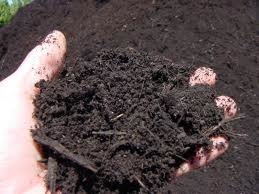Organic matter can be a confusing topic. Many believe that something that was once alive but is now dead, such as leaves or plant scraps, is considered to be organic matter; however that is not the case as that would actually be considered organic material, not matter. Organic material decomposes at a rate of 10:1 meaning for every 10 pounds of organic material, 1 pound of organic matter should be generated. For this organic material to turn into organic matter, it must be converted by microorganisms into a resistant decomposed state, known as humus. This organic material is not stable within the soil unlike organic matter that is stable within the soil.
Determining the Percentage of Organic Matter
Soil testing, or analyzing, is an essential and affordable step to improve the percentage of organic matter within the soil. This is done by taking plug samples from the soil, typically at the depth of the root zone, and sending those samples off to a private laboratory to be analyzed. The results of this analysis will tell the percentage of organic matter that the soil currently contains.
The Benefits of Organic Matter
Organic matter acts as a sponge and holds up to 90% its weight. It is a reservoir of nutrients and water that release over time, as the plant or turf needs it.
Nutritional benefits
Organic matter contains a lot of nutrients, such as nitrogen, phosphorus and sulfur. All of these nutrients are crucial to the growth of plants and turf. The organic matter holds these nutrients until prime conditions, and then they are released into the root system of the plant, typically during the growing season of the plant.
Water Supply
The sponge like organic matter holds and conserves water for when the plant needs it such as during the warmer and dryer summer months. Having a good percentage allows for a healthier lawn that may require less watering or irrigation use.
Erosion
Organic matter reduces the chance of soil erosion because it acts as glue, sometimes reducing it up to 20 or 30 percent for only having 1 to 3 percent of matter.
Carbon Sequestration
Organic matter can work as an air filtration as well. Carbon dioxide in the environment is transferred into the soil and helps off-set emissions from fossil-fuels and carbon-emitting activities. This transfer can enhance the long-term productivity of the soil as well as enhance the soil quality.
Improving the Percentage of Organic Matter
Building up the percentage of organic matter is not an overnight process; it is a long term goal to work at. A few of the best ways to improve organic matter is to reduce erosion of the soil, soil test annually, and fertilize properly. Being on the correct fertilization regime helps to build stronger roots and stronger roots keep organic matter where it needs to be, as well as helps to avoid erosion.
Another good way to help improve the organic matter within the soil is to avoid exposing it. Digging, tilling or doing any activity brings the organic matter to the surface causing it to be losing its beneficial qualities.
There is no set rule on how much organic matter the soil needs to have, but typically in Illinois, organic matter ranges from anywhere from 1-6%. Locally, a lawn with organic matter above 3% is ideal. Soils in other states can range from 12-18%, which is considered to be organic soil, as well as up to 90% organic matter in soils that are in low-lying, wet areas.
Sum it up
To sum it up, organic matter is very important. It is important to the soil, important to plant life and important to the environment. Remember to test the soil annually or bi-annually to see if the percentage of organic matter is increasing and do not be discouraged if that percentage has not changed or has only changed slightly. Though the process of improving organic matter is a slow one, it is definitely a process to work on.
It is always a good idea to consult with a lawn care professional and ask any questions you may have. Look around, ask friends or family, and research companies on the Better Business Bureau to find a company that you can trust.

